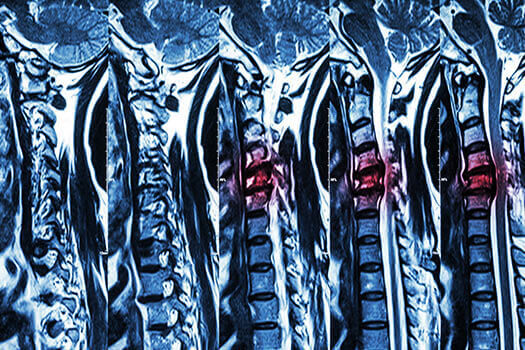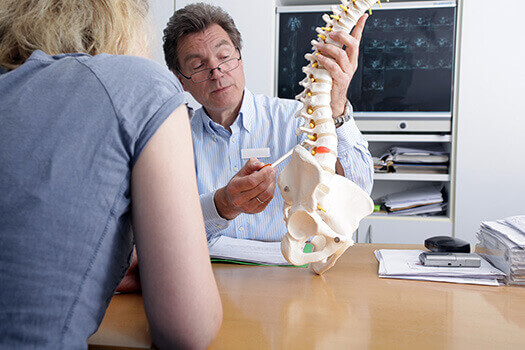Due to its location, the tailbone (coccyx) can be a source of pain that usually becomes more noticeable when sitting or making movements that place pressure on the very bottom of your spine near the buttocks. Tailbone pain (coccydynia) is […]
Herniated discs are a common source of lower back and neck pain. However, discomfort from lumbar or cervical herniated discs may result in symptoms in other areas beyond where you’d expect to experience pain. Because disc herniation is related to […]
Lower back pain is the reason most people schedule a visit to their doctor. While herniated discs and pinched nerves can be a source of such discomfort, strain on muscles that have been overused, over-stretched, or damaged is often the […]
The health-related risks linked to excess weight have been well documented and researched. With chronic back pain, especially pain stemming from a herniated disc, carrying around extra pounds can place added stress on nerve roots. If surgery is something you’re […]
Most of the time, the first person you’ll see about your back pain will be your primary care physician. These general practitioners have knowledge of many common medical conditions. Since back pain is the reason for most doctor visits in […]
A pars defect is a fracture between two joints within the portion of the vertebrae that has bony extensions that form the adjacent joint called the pars interarticularis. It’s sometimes referred to as spondylolysis, the term for a spinal fracture […]
Physical therapy (PT) is one of the most commonly recommended methods for managing back pain. Sessions often involve muscle strengthening exercises and therapeutic techniques such as soft tissue manipulation, electric stimulation, and hot and cold therapy. Most of the time […]
Australian-based regenerative medicine company Mesoblast recently announced results of the second part of an ongoing clinical trial. The research involves cell injections given to patients with chronic lower back pain related to degenerative disc disease (DDD). Initial results suggest the […]
Damage to the bones of the spine or the joints that support it sometimes results in a condition called segmental spinal instability. The condition is characterized by a range of motion greater than what’s considered normal (hypermobility). Excessive movement between […]








